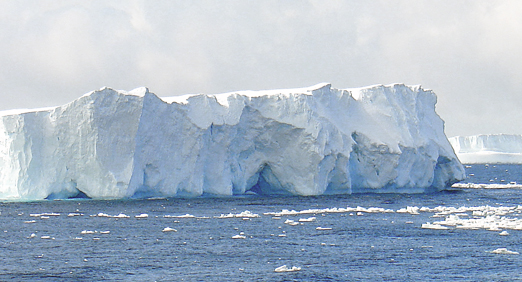Policy opportunities
The Arctic is warming faster than the rest of the globe. Beside carbon dioxide (CO2), black carbon emissions accelerate the warming and the melting of the snow and ice. Black carbon emissions are mostly caused by human activities, such as heating and transportation, when fossil fuels, biofuels and biomass are burnt incompletely.
Because black carbon remains in the atmosphere only days, reductions of black carbon emissions could slow down the warming relatively quickly. Efficient black carbon mitigation options include cleaner fuels and enhanced combustion devices for household heating and cooking and particulate filters for diesel engines.
Policy actions are needed to promote the implementation of the mitigation measures. Examples of on-going processes that address among other things black carbon are international collaboration within the Arctic Council and its working groups, specifically the Arctic Monitoring and Assessment Programme (AMAP) and the Arctic Contaminants Action Program (ACAP) as well as the Climate and Clean Air Coalition to Reduce Short-Lived Climate Pollutants (CCAC) and Global Alliance for Clean Cookstoves.
The solutions to mitigate black carbon are local in nature targeting people's everyday activities like cooking or moving. Therefore national and local actors should also take active role in designing and assessing the feasibility of policies and technologies to reduce emissions of black carbon.
 Photo: Antti Samuli
Photo: Antti Samuli

Black carbon emissions accelerate Arctic warming
Arctic temperatures have increased at almost twice the global average rate over the past 100 years. Warming in the arctic has been accompanied by an earlier onset of spring melt, lengthening of the melt season and changes in the mass balance of Greenland ice sheet.
Besides carbon dioxide (CO2) and other long-lived greenhouse gases, the Arctic warming is affected by air pollutants that have much shorter lifetimes in the atmosphere. For example small airborne particles stay in the atmosphere only some days. Black carbon is the most important component of airborne particles that warms the atmosphere. Additionally on snow and ice covered areas it darkens the surfaces and thus may accelerate the melting process.
Quick response from black carbon mitigation
The short atmospheric lifetime and the large impacts that have been attributed to black carbon make it an attractive target for emission reductions. The short-lived species have the advantage that the emission reductions will have a quick response as opposed to reduction of long-lived greenhouse gases, such as CO2. By such reductions, one may potentially buy time for the Arctic environment until CO2 reduction efforts will decrease its atmospheric concentration. However, CO2 reduction measures should remain a priority, since only via them it is possible to affect the climate in the long term.
Mitigation opportunities in small stoves and traffic
The emission sources of black carbon are mostly anthropogenic, the only natural source being vegetation and forest fires. Biggest anthropogenic sources are households that use solid fuel stoves for heating or cooking as well as combustion engines used in the transport sector. Mitigation options for these sources include cleaner fuels or combustion devices and particulate filters. Black carbon has not been included in emission limit legislation yet, but its emissions in some source sectors are affected indirectly by air pollutant emission legislation. As an example the Euro-standards that set particulate matter (PM) emission limits for vehicles.


 Photo: Antti Samuli
Photo: Antti Samuli

